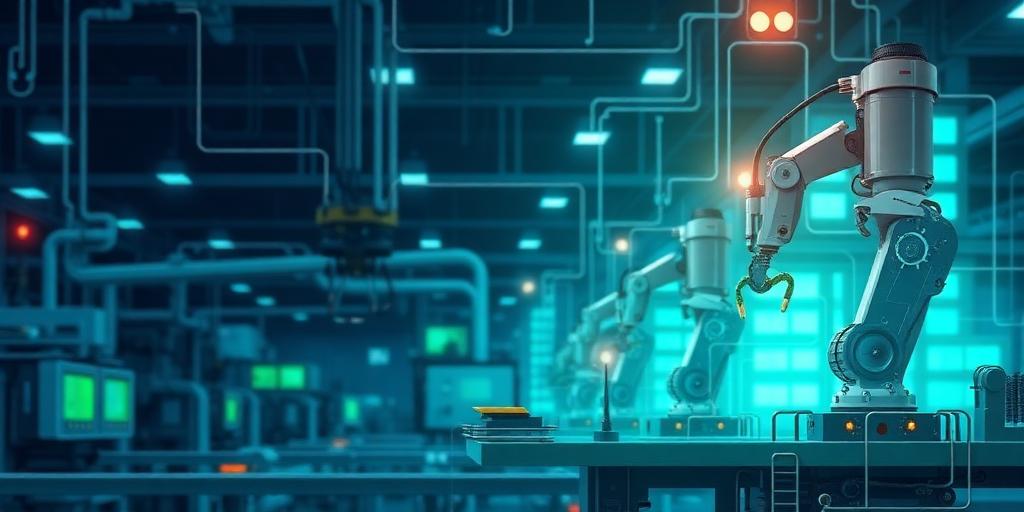A Deep Dive into Industrial IoT (IIoT)
The Industrial Internet of Things (IIoT) represents a transformative paradigm shift in how industries operate, leveraging interconnected devices, advanced analytics, and machine-to-machine communication to enhance efficiency, safety, and productivity. Unlike consumer-grade IoT, IIoT focuses on mission-critical applications within sectors such as manufacturing, energy, logistics, and healthcare, where precision, reliability, and security are paramount. This comprehensive exploration will delve into the fundamental architecture, profound applications, and critical considerations shaping the future of industrial automation.
Defining Industrial IoT: More Than Just Connected Devices
At its core, IIoT extends the principles of the Internet of Things to industrial environments. It involves the deployment of sensors, actuators, and smart devices that collect vast amounts of data from physical assets, processes, and environments. This data is then transmitted through secure networks to sophisticated analytics platforms, often leveraging edge computing for real-time insights or cloud platforms for broader analysis. The objective is to convert raw operational data into actionable intelligence, enabling organizations to make informed decisions, optimize operations, and preempt potential failures. Understanding IIoT's distinct characteristics—high reliability, robust security protocols, and integration with legacy operational technology (OT) systems—is crucial for successful implementation.
The Foundational Pillars of IIoT Architecture
A robust IIoT ecosystem relies on several interconnected components working in concert:
- Sensors and Actuators: These are the eyes and hands of IIoT, collecting data on parameters like temperature, pressure, vibration, and flow, and executing commands to control machinery.
- Connectivity: Reliable and secure communication protocols (e.g., 5G, LoRaWAN, Ethernet, Wi-Fi, MQTT) ensure seamless data flow from the edge to the cloud and back.
- Edge Computing: Processing data closer to its source reduces latency, conserves bandwidth, and enables real-time decision-making, particularly critical in time-sensitive industrial processes.
- Data Platforms and Analytics: Cloud-based or on-premise platforms store and process massive datasets. Advanced analytics, including machine learning and artificial intelligence, extract patterns, predict outcomes, and provide prescriptive recommendations.
- Applications and User Interface: Software applications translate analytical insights into user-friendly dashboards, alerts, and control interfaces for operators and management.
Transformative Applications and Tangible Benefits of IIoT
The deployment of IIoT solutions yields significant benefits across various industrial verticals:
- Predictive Maintenance: By continuously monitoring equipment health, IIoT enables organizations to anticipate machinery failures before they occur, reducing unplanned downtime and maintenance costs. This proactive approach significantly extends asset lifespan.
- Asset Tracking and Optimization: Real-time location and status monitoring of assets, tools, and inventory improve utilization, reduce loss, and streamline supply chain logistics.
- Enhanced Quality Control: IIoT sensors can detect anomalies in production lines, ensuring consistent product quality and reducing defects, thereby minimizing waste and rework.
- Operational Efficiency and Safety: Optimizing energy consumption, identifying bottlenecks, and monitoring hazardous conditions contribute to more efficient and safer working environments. Data from wearable IIoT devices can even track worker safety.
- Supply Chain Transparency: Gaining end-to-end visibility into the supply chain allows for better inventory management, demand forecasting, and risk mitigation.
Navigating the Challenges: Security, Interoperability, and Data Management
Despite its immense potential, the journey to a fully integrated IIoT environment is not without obstacles. Cybersecurity remains the foremost concern; connecting operational technology (OT) systems to IT networks creates new attack vectors that malicious actors can exploit. Robust encryption, access controls, and continuous threat monitoring are imperative. Interoperability between diverse legacy systems and new IIoT devices presents another hurdle, necessitating open standards and flexible integration platforms. Furthermore, the sheer volume, velocity, and variety of data generated by IIoT systems demand sophisticated data management strategies, including secure storage, effective processing, and robust governance frameworks.
The Horizon of Industrial IoT: AI, Digital Twins, and 5G
The evolution of IIoT is inextricably linked with advancements in complementary technologies. Artificial intelligence (AI) and machine learning (ML) are becoming integral, moving beyond predictive analytics to enable autonomous decision-making and prescriptive actions. The concept of Digital Twins—virtual replicas of physical assets, processes, or systems—is gaining traction, offering unparalleled capabilities for simulation, testing, and optimization in a risk-free environment. The widespread deployment of 5G networks will provide the low latency and high bandwidth necessary for real-time data exchange in highly distributed industrial settings, unlocking new possibilities for automation and control. These synergistic technologies will collectively propel industries towards a new era of intelligent, adaptive, and hyper-efficient operations.
Conclusion
Industrial IoT is not merely a technological trend; it is a fundamental shift in how industrial enterprises create value. By transforming inert data into actionable intelligence, IIoT empowers organizations to achieve unprecedented levels of operational excellence, drive innovation, and build resilient, competitive businesses. While challenges persist, the strategic adoption of IIoT, coupled with continuous investment in cybersecurity and technological integration, will be the cornerstone of industrial leadership in the 21st century. The journey towards a fully connected and intelligent industrial landscape is well underway, promising a future where efficiency and innovation know no bounds.




